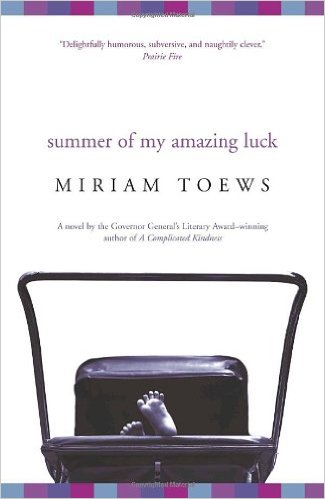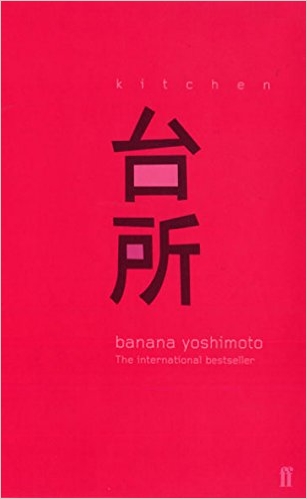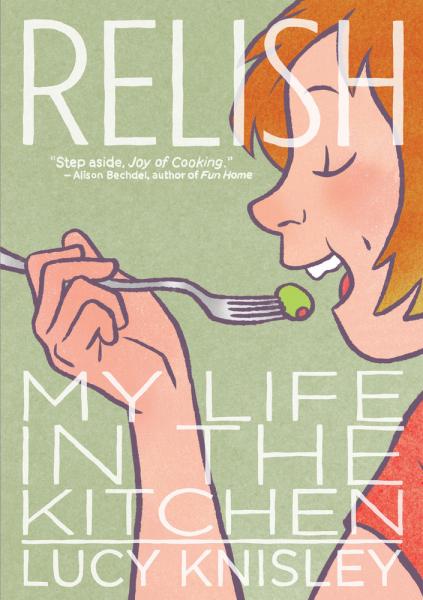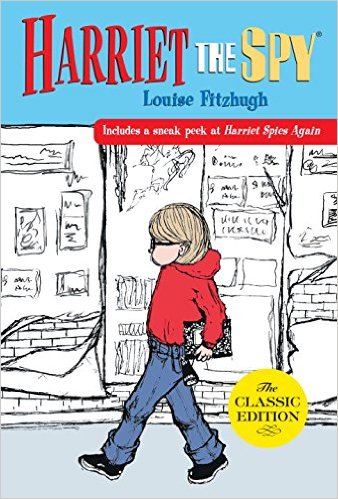With a little less than a month until our call for food-related writing and art closes, food lovers and co-editors Rose Morris and Kayi Wong reminisce about the most memorable meals they have come across, not on their plates, but between the pages of books.
Food in Literature (Part Two)
With a little less than a month until our call for food-related writing and art closes, food lovers and co-editors Rose Morris and Kayi Wong reminisce about the most memorable meals they have come across, not on their plates, but between the pages of books.
In the second part of this two part series, Rose Morris continues her reminiscing with a short reflection on Miriam Toews’ Summer of My Amazing Luck, and then Kayi Wong takes over with three more musings on the role of food in literature.
Summer of My Amazing Luck by Miriam Toews
“We all had different ways of preparing them, but still the humble noodle was the starting point of most of our meals. Lish prepared rotini noodles, sometimes herbal ones, with a lot of garlic which she shaved with a razor, and extra virgin olive oil. Sometimes she added mushrooms or a green or red pepper for a dash of colour and zippy taste. I poured tomato sauce on mine and grated Parmesan cheese. Teresa heaped butter and ketchup onto hers. But our kids ate the noodles plain, sometimes with a bit of butter or cheese, but never any sauce—and god forbid garlic or peppers. Simplicity was the key with noodles.”
Toews highlights the differences in personality of her characters by describing their variant ways of preparing the same dish. In doing so, she manages to transform the humble noodle into a glorious feast, simultaneously simple and luxurious.

—Rose Morris
Kitchen by Banana Yoshimoto (Translated by Meghan Backus)
“The place I like best in this world is the kitchen. No matter where it is, no matter what kind, if it’s a kitchen, if it’s a place where they make food, it’s fine with me. Ideally it should be well broken in. Lots of tea towels, dry and immaculate. White tile catching the light (ting! ting!)
I love even incredibly dirty kitchens to distraction—vegetable droppings all over the floor, so dirty your slippers turn black on the bottom.”

Banana Yoshimoto’s Kitchen illustrates how much the process of cooking and eating is ingrained in our relationships, memories, and survival—especially during periods of loneliness and grief. After Miyage loses her grandmother, her only remaining family, she moves in with her grandmother’s young friend and his transgender mother. Conveniently for her new roommates and loving family, Miyage starts to cook obsessively, and then professionally. The most memorable meal I’ve come across in fiction is also one I cannot go into detail describing as it happens at a pivotal point in Kitchen. For days after finishing the novel, I craved a steaming bowl of katsudon. I might have satisfied my hunger eventually but it did not fill the void left by Miyage, who attempted courageously and earnestly to save those around her and herself with the comforting nature of food.
—Kayi Wong
Harriet the Spy, written and illustrated by Louise Fitzhugh
“”Listen, Harriet, you’ve taken a tomato sandwich to school every day for five years. Don’t you get tired of them?”
“No.”
“How about cream cheese and olive?”
Harriet shook her head. The cook threw up one arm in despair.
“Pastrami? Roast beef? Cucumber?”
“Tomato.”
Young Harriet may live on the Upper East Side of New York City, with her parents and cook, but she is loyal to her monotonous diet: cake and milk after school, chocolate egg cream during a break from her neighourhood espionage, and always a tomato sandwich (made up of two slices of toast, tomatoes, and mayonnaise) for lunch and whenever else she is hungry. As someone who will try anything at least once when it comes to food, the dietary rituals of this young spy somehow appeal to my more-is-more palate and appetite. Harriet is, after all, a girl on a mission. She reminds me that not every meal has to satisfy all of my taste buds, and sometimes, a meal that seems utilitarian can be fulfilling as well.
—Kayi Wong
Relish, written and illustrated by Lucy Knisley

Relish is a vivid, graphic food memoir penned and illustrated by Lucy Knisley about a few of her key life experiences related to food and cooking. Throughout her adolescent and college years, Lucy travelled around and moved with her family. Young Knisley grew up with a family of foodies and culinary professionals, savouring oysters and goose livers while most of her peers were devouring pop tarts. However, it is the most ordinary dishes that she craves most often and finds the most comfort in. Luckily, she has illustrated recipes for many of the dishes about which she has told a story. Try her reliable chocolate chip cookies or her simple but meticulously sautéed mushrooms.
—Kayi Wong















